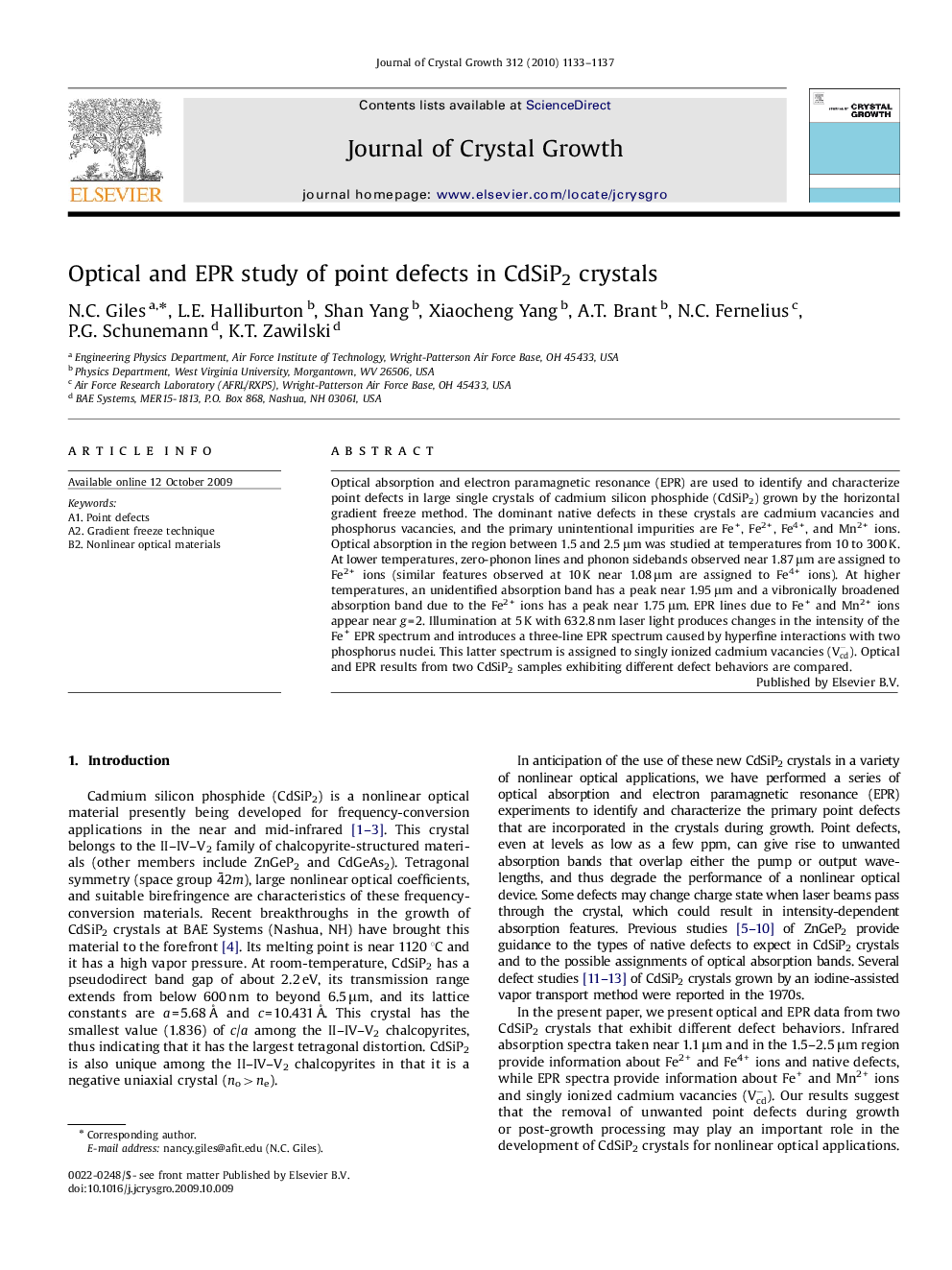| Article ID | Journal | Published Year | Pages | File Type |
|---|---|---|---|---|
| 1793462 | Journal of Crystal Growth | 2010 | 5 Pages |
Abstract
Optical absorption and electron paramagnetic resonance (EPR) are used to identify and characterize point defects in large single crystals of cadmium silicon phosphide (CdSiP2) grown by the horizontal gradient freeze method. The dominant native defects in these crystals are cadmium vacancies and phosphorus vacancies, and the primary unintentional impurities are Fe+, Fe2+, Fe4+, and Mn2+ ions. Optical absorption in the region between 1.5 and 2.5 μm was studied at temperatures from 10 to 300 K. At lower temperatures, zero-phonon lines and phonon sidebands observed near 1.87 μm are assigned to Fe2+ ions (similar features observed at 10 K near 1.08 μm are assigned to Fe4+ ions). At higher temperatures, an unidentified absorption band has a peak near 1.95 μm and a vibronically broadened absorption band due to the Fe2+ ions has a peak near 1.75 μm. EPR lines due to Fe+ and Mn2+ ions appear near g=2. Illumination at 5 K with 632.8 nm laser light produces changes in the intensity of the Fe+ EPR spectrum and introduces a three-line EPR spectrum caused by hyperfine interactions with two phosphorus nuclei. This latter spectrum is assigned to singly ionized cadmium vacancies (Vcd-). Optical and EPR results from two CdSiP2 samples exhibiting different defect behaviors are compared.
Related Topics
Physical Sciences and Engineering
Physics and Astronomy
Condensed Matter Physics
Authors
N.C. Giles, L.E. Halliburton, Shan Yang, Xiaocheng Yang, A.T. Brant, N.C. Fernelius, P.G. Schunemann, K.T. Zawilski,
